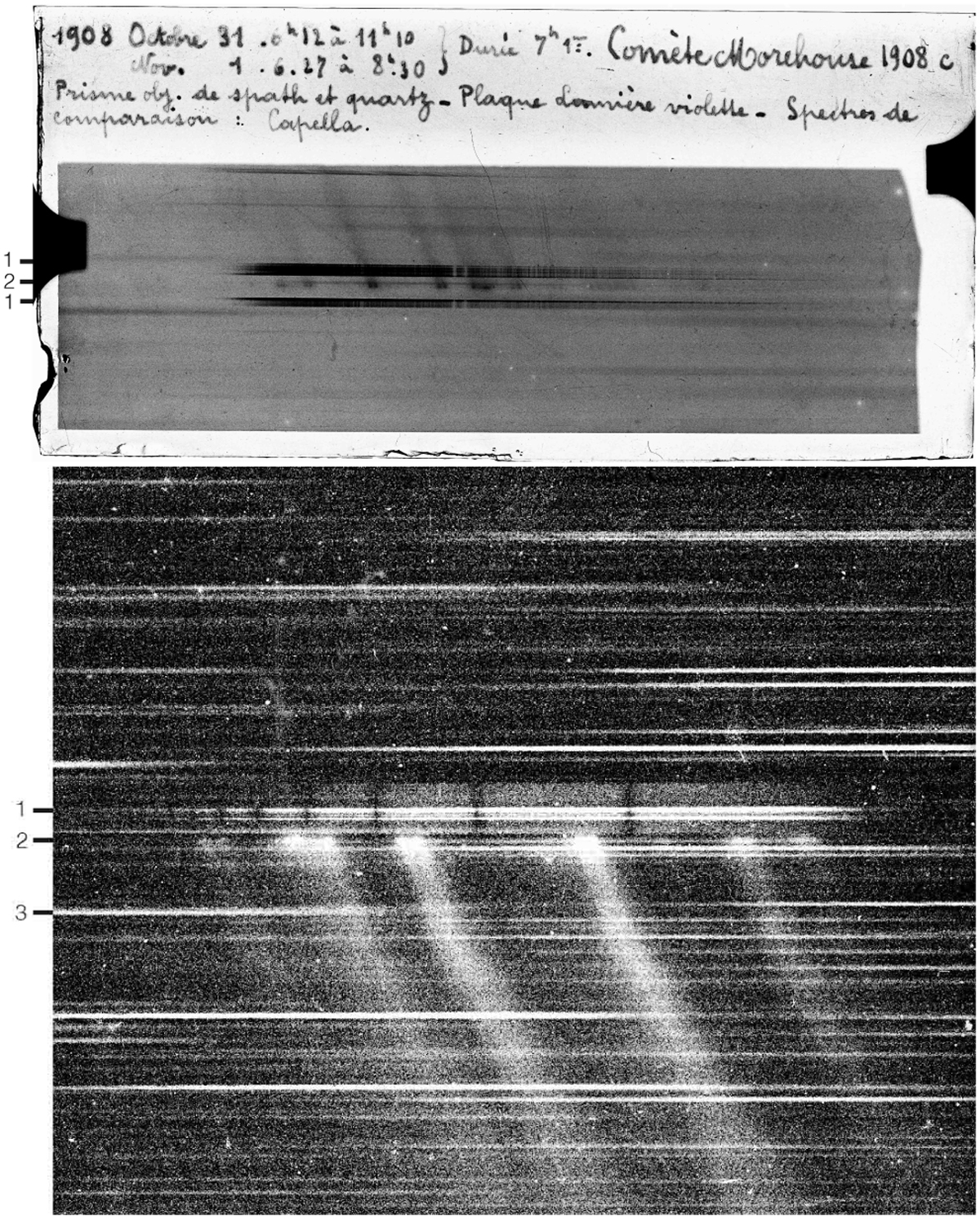Fig. 3

Download original image
Two of the spectroscopic plates scanned from the Meudon Observatory library archives. Top: scan of Plate 3 obtained over two combined nights 31 October and 1 November 1908 (de La Baume Pluvinel & Baldet 1908, 1911). This spectrum (2-, indicating the nucleus region) was obtained at the Meudon observatory. As the prism objective used to take the spectra has no slit, all the objects in the field of view are dispersed. The spatial extension of the comet ion tail is visible for each of the bright CO+ bands. There is no obvious continuum visible on the head of the comet. The text translates to “1908 October 31 6h12 to 11h10, November 1 6h27 to 8h30. Length 7h01. Comet Morehouse 1908c. Objective prism of spar and quartz – violet light plate – comparison star: Capella.” The two bright spectra correspond to the Capella spectrum, used as a reference star for relative flux calibration. Bottom: Scan of Plate 2 from 30 October 1908 (Deslandres 1908). This spectrum (2-, indicating the nucleus region) was obtained at the Meudon observatory using a 24 cm refractor telescope equipped with an objective prism. The bright spectra correspond to the spectrum of δ Cygni (1-), which is used as a reference star for relative flux calibration. The long horizontal streaks (i.e., 3-) are field stars dispersed and not tracked by the telescope.
Current usage metrics show cumulative count of Article Views (full-text article views including HTML views, PDF and ePub downloads, according to the available data) and Abstracts Views on Vision4Press platform.
Data correspond to usage on the plateform after 2015. The current usage metrics is available 48-96 hours after online publication and is updated daily on week days.
Initial download of the metrics may take a while.


